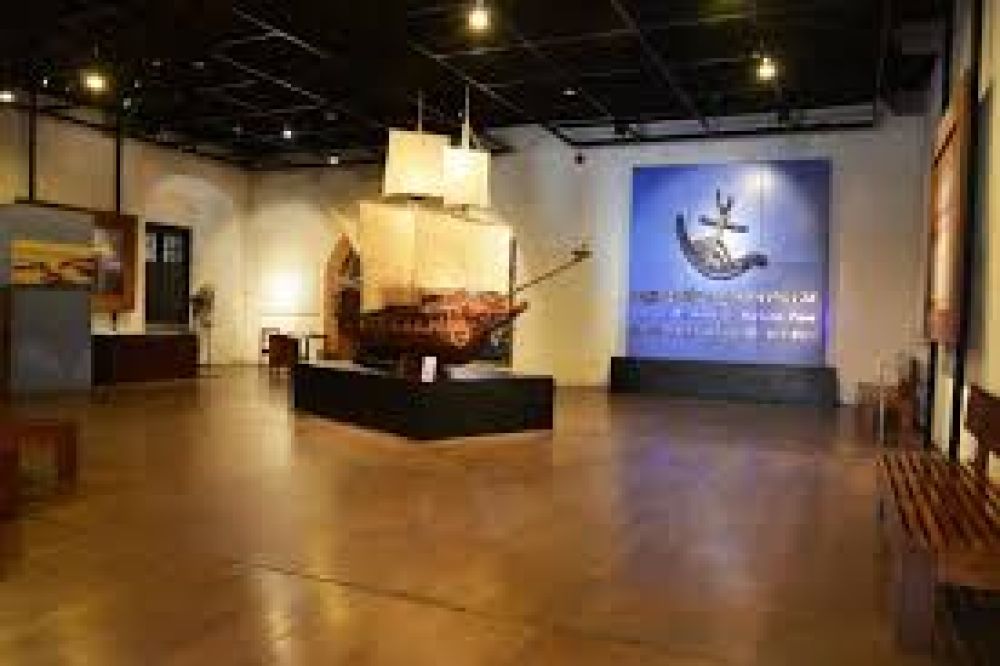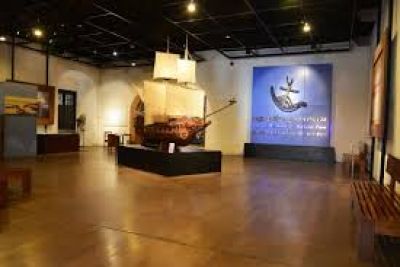

Embark on a comprehensive tour of the Maritime Archaeology Museum located in the historic Galle Fort, a UNESCO World Heritage Site. The museum beautifully presents Sri Lanka’s maritime history and underwater archaeology within a restored 1671 Dutch warehouse. Visitors will explore a range of exhibits that articulate the island's trade history, colonial battles, and ancient sea-faring traditions. You will see artifacts salvaged from shipwrecks, ancient navigation maps, and marine artifacts that paint a picture of the past. The tour is not only educational but also engaging for visitors of all ages—highlighting the importance of oceanic trade and the strategic significance of Galle throughout history.
Participate in an engaging workshop led by professionals in the field of maritime archaeology. The educational workshop aims to give a detailed understanding of underwater archaeology, conservation practices, and the rich maritime heritage of Sri Lanka. The session includes interactive activities, multimedia presentations, and opportunities to examine real artifacts. This workshop is perfect for students, history enthusiasts, and anyone looking to delve deeper into the mysteries of the deep sea and the tales that the submerged wrecks hold.
Step into the world of virtual reality and experience the depths of the ocean without getting wet. The Maritime Archaeology Museum offers a VR experience that takes you on an immersive journey to underwater wreck sites around Galle. With cutting-edge technology, you will explore sunken ships and marine life as if you were diving in the ocean. It's an educational, thrilling adventure suitable for all ages. This activity is a particularly popular choice for those who wish to witness the underwater heritage without the need for diving certifications.
Dive into history with the Shipwreck Exhibition at the Maritime Archaeology Museum. This section of the museum is dedicated to showcasing the assorted relics retrieved from ancient and historical shipwreaks found around Sri Lanka's coastline. The artifacts on display range from porcelain plates to sailors' personal belongings, each with its own tale. The exhibition provides an insight into the maritime silk route and the types of goods that were traded across the oceans. Informational plaques and interactive screens help visitors to understand the historical significance of each find.
Combine your visit to the Maritime Archaeology Museum with a pleasant walk around the Galle Fort. Explore the fort’s ramparts, the lighthouse, and its cobblestone streets. While this isn't strictly an activity within the museum, the fort itself is intricately linked to the maritime history housed within the museum walls. A guide can explain the fort's storied past and its role in the international maritime trade. Enjoy the blend of Dutch, Portuguese and British architecture as you soak in panoramic views of the Indian Ocean.
The Conservation Laboratory Tour at the Maritime Archaeology Museum provides a behind-the-scenes look at the meticulous process of preserving artifacts retrieved from the sea. This guided tour offers a unique perspective on the challenges of maritime artifact conservation and the various techniques used to prevent deterioration. Participants will witness conservation specialists at work and learn about the scientific procedures employed to restore and maintain historical objects for future generations. This activity is highly informative and gives a deeper appreciation for the work involved in preserving maritime heritage.
The museum features a state-of-the-art multimedia presentation room where visitors can watch informative documentaries and presentations about maritime archaeology. These sessions provide valuable context to the exhibits and enhance the overall museum experience. Guests can learn about the significance of undersea exploration, the evolution of maritime technology, and the global connections established through trade and navigation. The presentations are a perfect prelude to the museum tour, setting the historical stage for what visitors will see in the exhibits.
Immerse yourself in a visual storytelling experience at the Photography Exhibition, where the walls are adorned with captivating images of undersea exploration, excavation sites, and the recovered treasures of shipwrecks. Each photograph is accompanied by detailed descriptions that transport visitors into the world under the waves. The exhibition aims to shed light on the daily life of maritime archaeologists and the beauty that lies beneath the ocean's surface. This activity appeals to a wide spectrum of visitors, including photography lovers and those fascinated with submerged cultural landscapes.
The museum houses an Interactive Learning Zone designed specifically for children and teenagers, making it a great stop for families. This zone includes touchscreens and engaging activities that teach about shipwrecks, navigation, and the marine environment in a fun and interactive way. Kids can partake in treasure hunts, quizzes, and simulated excavation activities. The Learning Zone helps introduce the principles of archaeology and marine conservation to younger visitors, stimulating curiosity and broadening their understanding of history and science.
The Sea Trade Exhibition is a fascinating sector of the museum that focuses on the historic international trade routes and commodities that were exchanged between Sri Lanka and the rest of the world. Through carefully curated displays of coins, ceramics, and other artefacts, visitors gain insights into the economic and cultural exchanges that have shaped the region. These objects tell stories of ancient alliances, trade agreements, and the early forms of globalization that affected Sri Lanka and the Galle Fort. This activity will captivate those with an interest in economics, trade history, and cultural interactions across the Indian Ocean.
